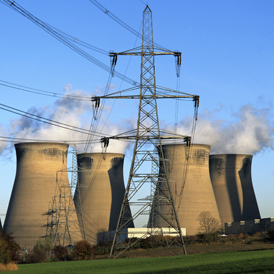What is the UK’s energy future?
How will the UK keep the lights on over the next 50 years, at the same time as meeting renewables targets? Jim Skea, research director at the UK Energy Research Centre, looks at the options.

There is a great temptation to think that there is an ideal blueprint for a secure and sustainable energy future, the role of each technology mapped out. But there are two problems. First, there is no agreement on an ideal blueprint. Exxon Mobil’s long-term energy vision is very different from that of Greenpeace.
Second, there is much that we simply do not know. Can we build nuclear plants to time and cost? Will the costs of renewable energy fall fast enough so they can be weaned off subsidies? Are members of the public up for changing their patterns of energy use? Will novel technologies work? Some uncertainties will be resolved through time and experience. Others we may have to live with for a long time.
By breaking the energy conundrum into manageable bits, we can pick our way through the maze. It’s helpful to think in terms of different timescales. Given lead times for implementing policies and getting technologies in place, 2020 is essentially tomorrow.
Given lead times for implementing policies and getting technologies in place, 2020 is essentially tomorrow.
We know what has to be done if energy and climate change goals are to be met. We need to invest in renewable energy, particularly onshore and offshore wind. Up to 30 per cent of our electricity could come from renewables by 2020 – if it doesn’t, we will fail to meet our obligations under EU directives.
Construction periods are too long for nuclear to make much of a contribution by 2020, but if it’s going to have a role in the 2020s we need to encourage investment now. The government’s Electricity Market Reform is critical in making this happen. And it has to be done in such as way that it doesn’t “scare the horses” in terms of investment in the gas-fired plant needed to ensure security of supply.

The aggressive pursuit of energy efficiency opportunities is needed. Simple things like making sure lofts and cavity walls are properly insulated will bring down energy costs, increase security of supply and help combat climate change. The government’s new Green Deal for consumers is going in the right direction, but industry, NGOs and academics are urging the government to look again at its proposals to ensure that the energy efficiency promise is fulfilled.
2030 is another major milestone. The energy mix is less certain than for 2020, but by then we need to be well on the way towards transforming the energy system. That will mean progressively using alternatives to conventional petrol and diesel vehicles. “Plug-in hybrid” vehicles – half petrol, half electric charged from the mains – and fully electric vehicles could account for a significant proportion of new purchases.
Read more from Channel 4 News on fuel bills: How you can save up to £400
An increasing number of homes could be heated by electric heat pumps instead of gas-fired boilers. Electricity generation will have been significantly “de-carbonised”, but the exact mix of nuclear, renewables and clean gas plant is far from certain. Over time we will narrow down the uncertainties by gaining more experience of nuclear and renewables. We will also learn whether “carbon capture and storage” can be made to work, allowing coal and gas to contribute to a clean electricity mix.
Out to 2030, the role of shale gas is another uncertainty. In energy as in financial deals, “if it’s too good to be true it probably is”. But even if “fracking” plays a limited role in the UK on geological, environmental or economic grounds, it could make the US a big exporter of natural gas, with implications for the world markets on which the UK increasingly relies.

2050 is the year in which the UK should meet its ambitious goal of cutting greenhouse gas emissions by 80 per cent. What the energy system will look like then is wide open. One vision sees biomass-fired power plants equipped with carbon capture and storage effectively sucking carbon dioxide out of the atmosphere and sending it off for geological storage.
Globally, solar energy is one of the most promising renewable technologies and costs are dropping fast. Another vision would see a move away from centralised power plants to a world in which highly energy-efficient households generate their own power through solar panels. Waves and tides provide the UK with a unique potential energy resource. Perhaps wave and tidal devices currently under development can be made to work reliably and cost effectively.
Thinking 40 years ahead, “knowing what you don’t know” is wise. Choosing now between technology A or technology B would be the wrong course. We need to develop technology A and technology B – and have the courage to close down options if they demonstrably fail.
That is the key to avoiding policy paralysis. For the next 10 years we know exactly what needs to be done. Energy efficiency, renewables development, planning for nuclear investment and supporting research, development and demonstration in new technologies are simply no-brainers.





